About this course
Welcome to Analyzing Your Audience! In this course, you’ll begin to analyze your audience. You’ll consider the characteristics of your target audiences and analyze their needs in order to create an interesting and engaging user experience. More specifically, you’ll consider issues of inclusivity, equity, and diversity as you determine how best to use principles of universal design to meet the needs of your audience.
What you'll learn
- to identify your target audiences and their potential needs in terms of their being able to access your edition, locate relevant materials within, and engage with the materials in meaningful ways.
- to consider how the design and features of a project impact how users access and engage with the materials.
- to summarize principles and tools that support an accessible webspace.
Course Content
Guides
Contributors
Supervision
- Krista Tomaselli
Visualization
- Krista Tomaselli
Writing—Review & Editing
- Neel Agrawal
- Katie Blizzard
- Cathy Moran Hajo
- Christopher Ohge
- Russ Sprinkle
- Serenity Sutherland
- Krista Tomaselli
Course Glossary
- Annotation
The use of descriptive, contextual, referential, or illustrative content or structure that supports the discoverability and accessibility of source materials. Annotation may take many forms (footnotes, source notes, metadata, glossaries, essays, indexes, keywords, images, maps, and more) and multiple forms of annotation may be used by a project.
- Metadata
Essentially, data about data. It can be used to describe the content, physical or structural features, and/or administrative elements of data. In providing such descriptions, metadata supports the management and discoverability of data. See the University of North Carolina Library's definition of metadata for more information: https://guides.lib.unc.edu/metadata/definition.
- Text Encoding
The act of using the Text Encoding Initiative or TEI—a set of XML guidelines that have been developed to describe humanities texts—to edit source materials through encoding. More information about TEI and how to use it can be found at the TEI Consortium, a scholarly community that maintains the guidelines: https://tei-c.org/.
- Usability
The quality to which a website's design results in the presentation of clear pathways for users to navigate the site, and in the usage of features and functions that are practical and accessible.
- User Experience
How an individual (or user) interacts with a product (like websites) and how that interaction is shaped by the product's design. Sometimes referred to as UX.


